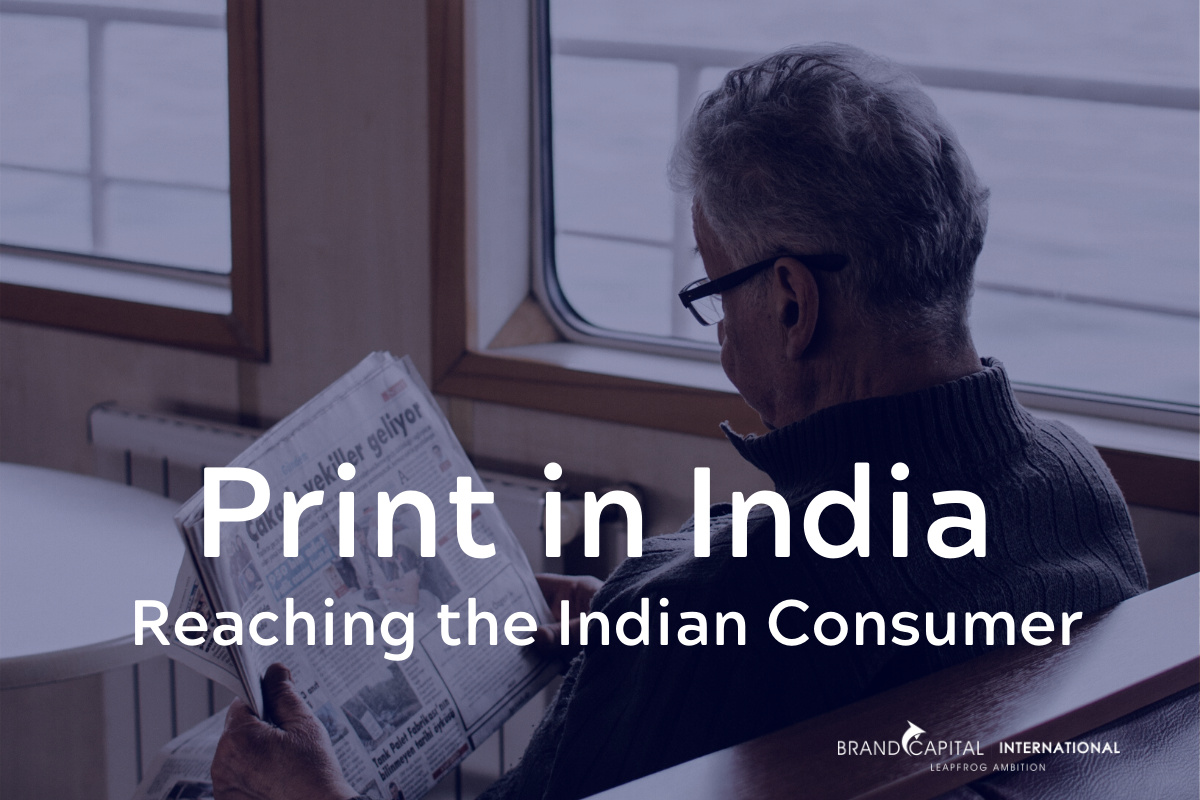
Print publications, and more specifically newspapers, deliver Indian consumers a non-intrusive, cognitive medium right to their doorstep. The habitual daily consumption of this medium, coupled with the existing cultural prominence it employs, makes print the most effective advertising medium for any company, across all sectors.
A rising medium: literacy, distribution, and prestige
While most of the world’s newspaper circulation is on the sharp decline, “print media in India seems to be doing pretty well and bucking the global trend,” reports Chirdeep Shetty, CEO of QuinType Technologies.
Shetty points to IBEF.org’s report where readership/circulation has shown a 60% growth from the mid 2000’s to the mid 2010’s -- and addresses two clear catalysts of this phenomenal expansion: literacy rates, and distribution networks are on the rise in India.
That’s because in recent years India has put huge emphasis on reforming their educational system, which leads to a large uptick in higher-class workers who choose to engage with the news. And while simultaneously mobile phone use is on the rise, meaning younger consumers may opt for digital channels, there is a certain structural prestige and system of reputable delivery built into the culture surrounding print media that digital just can’t hold a candle to.
“India is one of the very few countries in the world where the newspaper is delivered to your doorstep every day,” explains Shetty, pointing to India’s healthy print distribution network. “This zero-friction availability of newspapers is a significant contributor to its continued growth,”
Print presents a clear advertiser's advantage
Not to toot our own horn -- but our research at Brand Capital International, alongside The Times Group and Times Response, provides a clear call to action for those looking to launch in India: advertising in print is the way to go.
While we’ve already established reading the paper is a daily routine -- our studies show it’s a morning habit; the day begins with print. Brands can launch a new product or promotion, make a splash about a new variant or packaging, and create interest in the brand’s proposition through high impact visibility channels first thing in the morning.
Further, print gives a brand instant awareness and impact. That’s because recall to a print ad is much higher than most other mediums, as other mediums are highly fragmented. Fragmented advertising means there is no guarantee that the viewer has seen an ad -- or will retain it, as we’ve found ‘premium’ audiences are notoriously active ad-avoiders across TV and digital. Newspaper’s physicality offers guaranteed visibility and therefore higher recall, which results in better ROI for the advertiser.
And as we mentioned, we can’t deny the growing prominence of digital mediums, but print works better in conjunction with digital because of the ‘morning’ effect; launching a campaign on TV during prime time only further reinforces the impact or effect of a consumer seeing the ad previously. With the full day ahead to engage further, to talk to family, friends and colleagues about the brand/product they discovered, newspaper ads end up working harder by establishing those conversations prior to reifying their message through passive viewing in the evening.
Plus, printed words are credible and build trust for brands through association. In this day of ad avoidance and doubt about digital delivery, it is newspaper brands that provide the credibility and trust that brands seek in platforms they use to reach premium audiences. Further, we’re seeing a rise in ‘deep fakes’ and ‘fake news’ arising from the digital space, meaning brands are leveraging the credibility of the print medium to instill the public’s trust in products.
Stay updated on our news and events! Sign up to receive our newsletter.